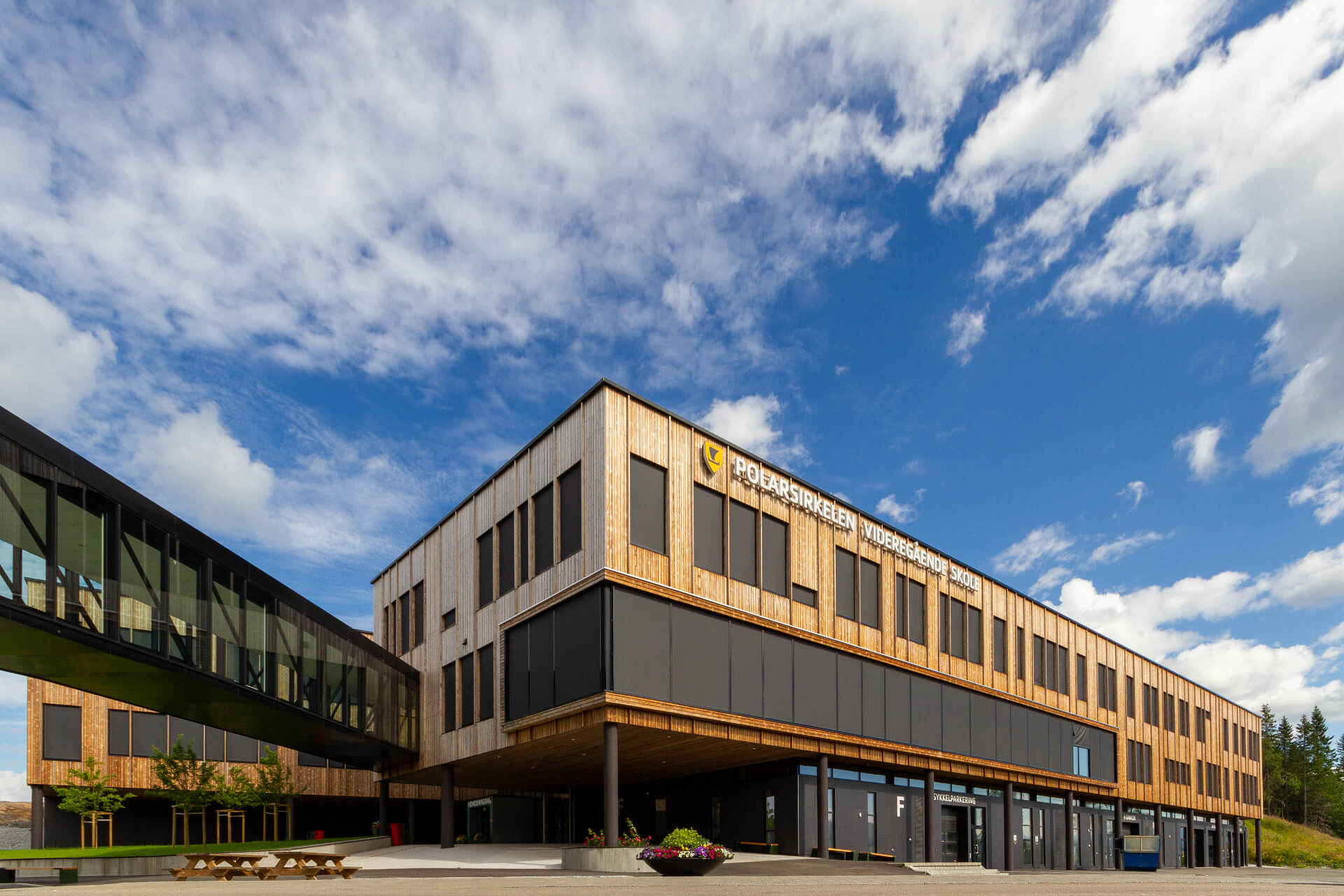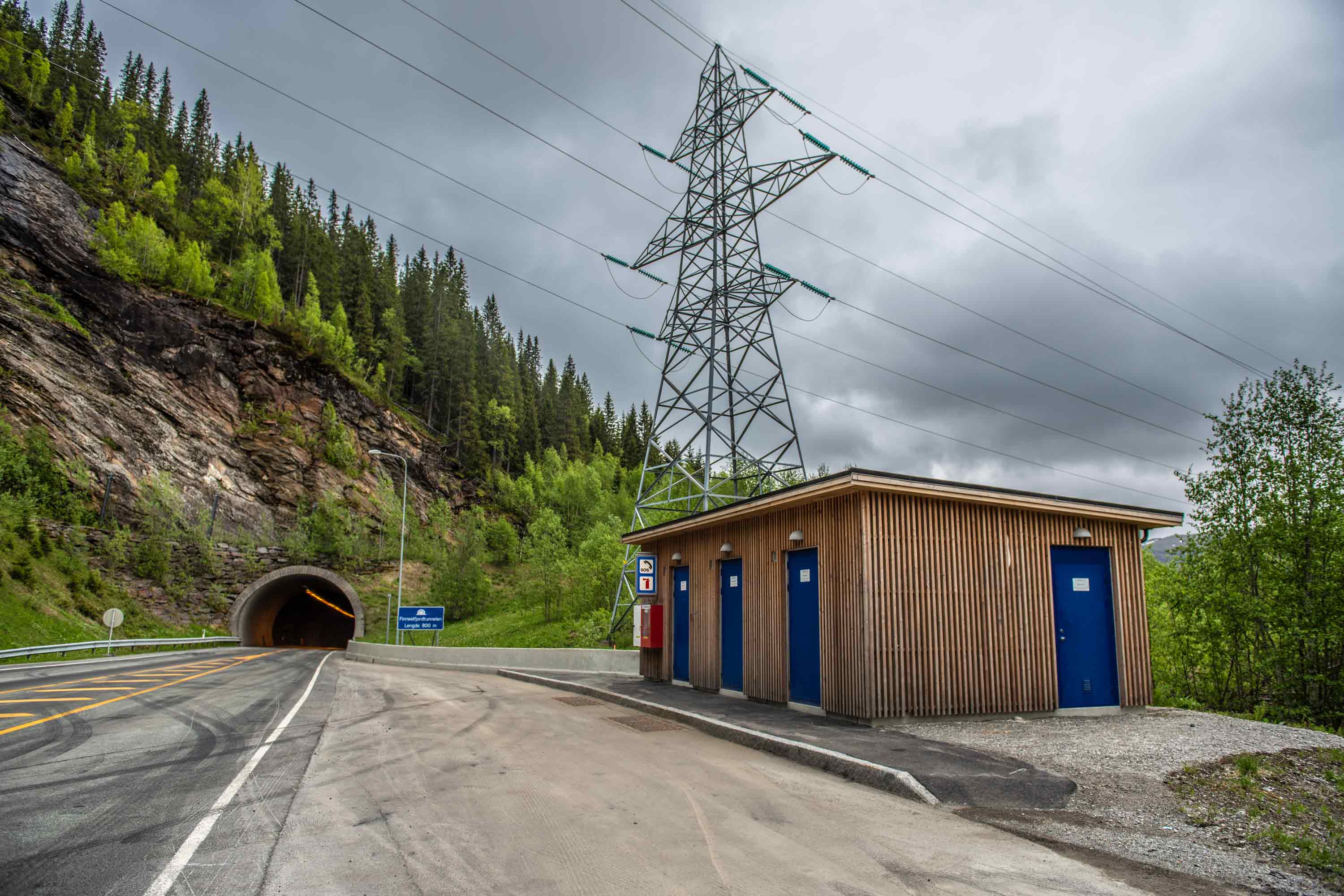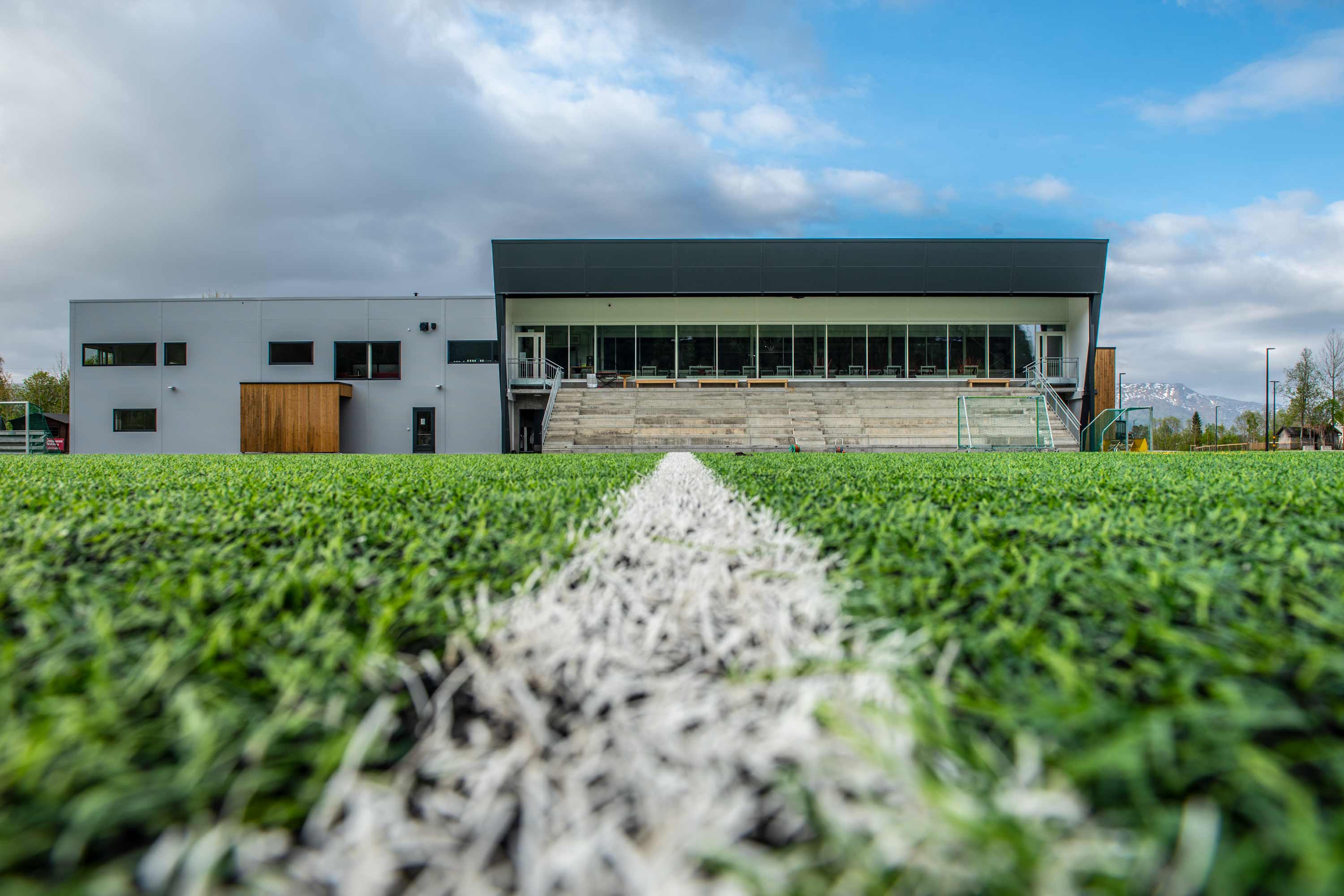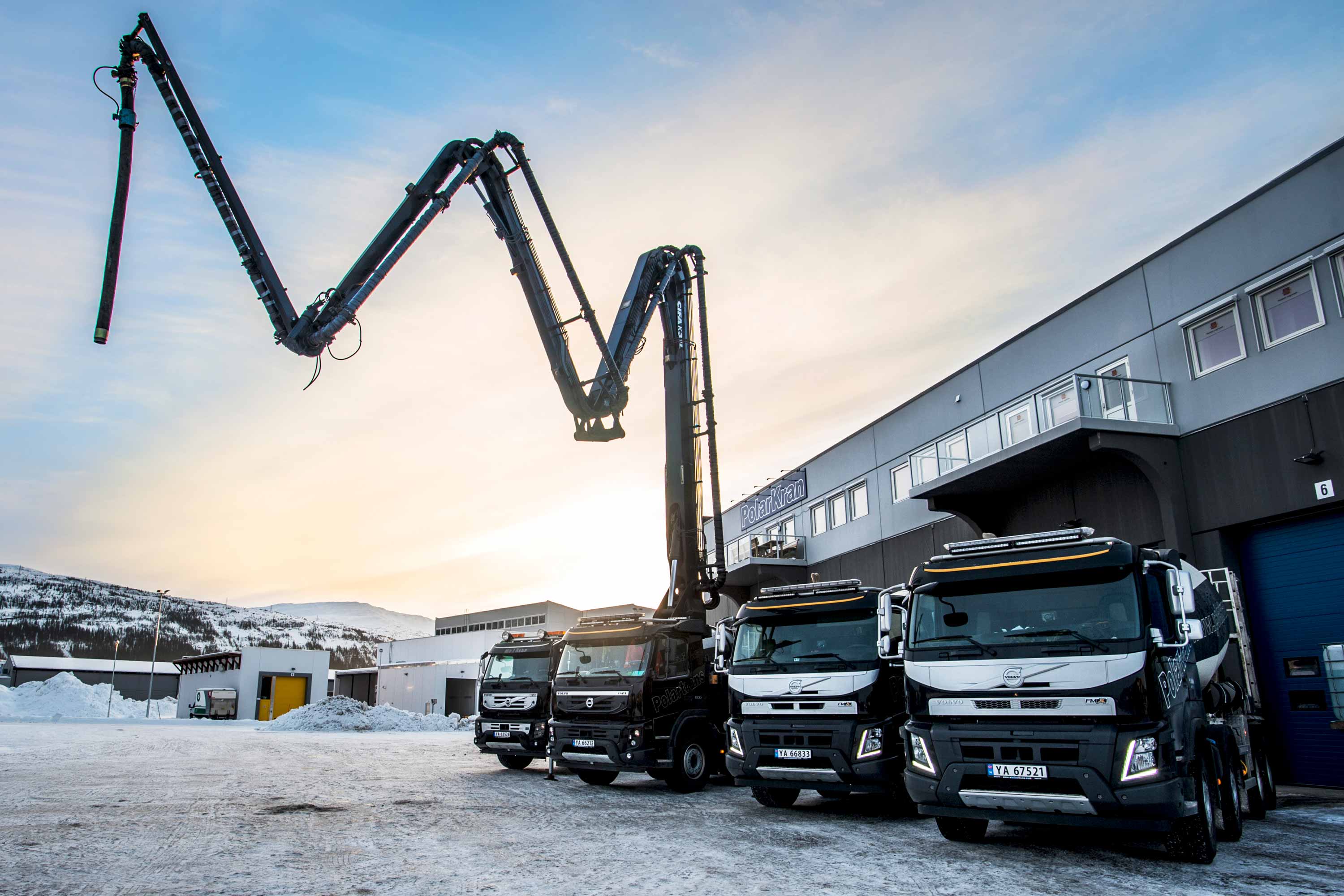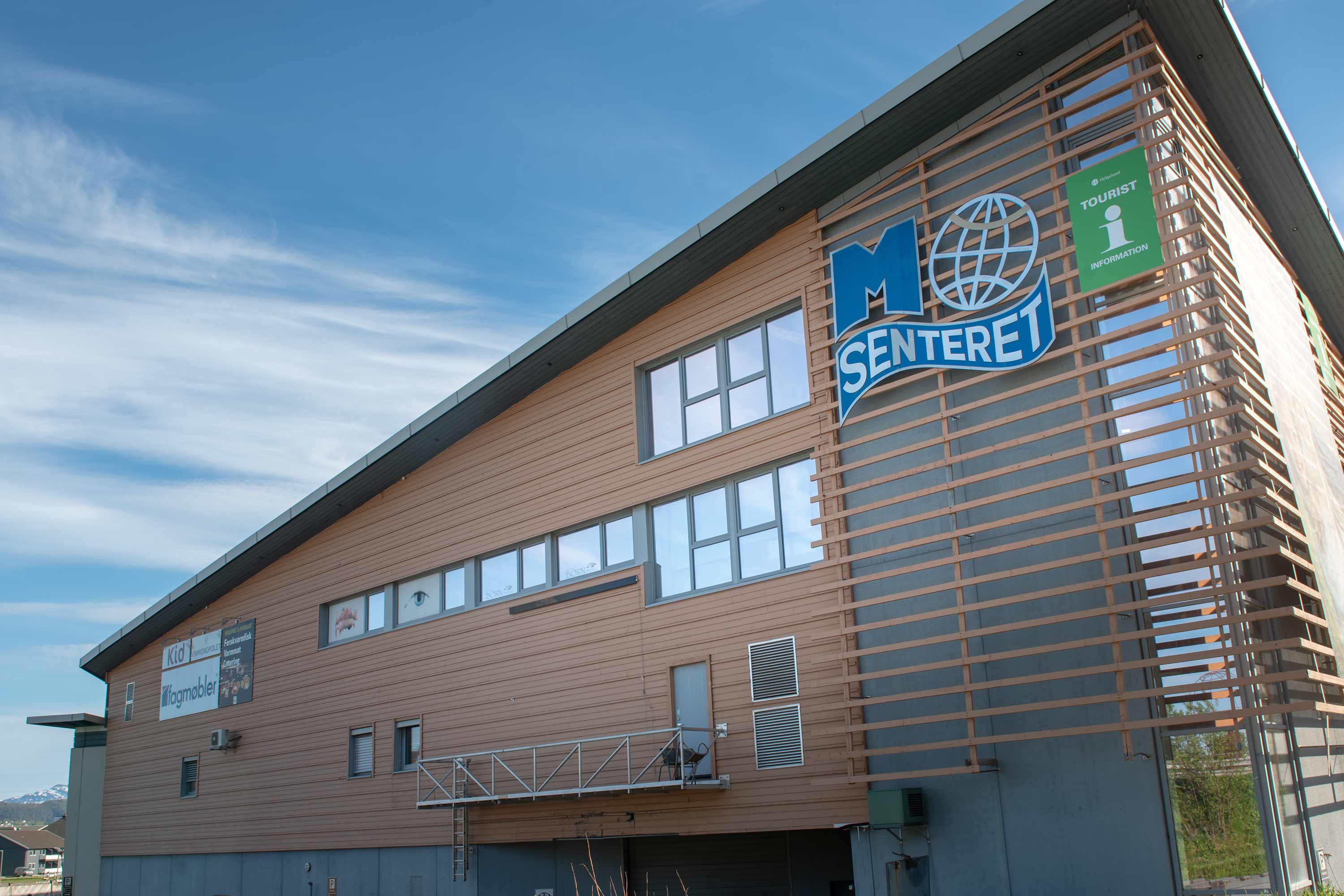Euro Block – Concrete Lego
– Just like building with lego
Euro Block are concrete blocks with the same building principles as lego. This solution is an affordable, flexible and durable way to both store and secure items. Euro Block is built to handle huge loads, and can function as protective walls, wall separators, roadblocks, massebinger, storage, carports, garages, noise isolating walls, and foundations. In short, if you can dream it, Euro Block can do it. Euro block is easy to set up, and expandable. It’s also reusable, so can be repurposed or resold.
The production of Euro Block is a sustainable one, both from an environmental perspective and a life cycle perspective, using leftover concrete as the building material.
The blocks are suitable for use in small and large projects alike, for both private and business customers.
Fordeler:
- Flexible solution
- Fireproof
- Durable
- Easy to set up and remove
- Cost-effective
Helgeland Ferdigbetong can provide support with loading the blocks for transport at the factory. However, the customer has to provide their own solution when unloading the blocks at the construction site.
Please contact department manager Vidar Røssvassbukt for any inquiries or orders:
+47 48 00 12 07
vr@helgelandferdigbetong.no
Specifications:
| Type | Height | Width | Length | Weight | Price (ex VAT.) |
| 1/3 block | 0,6 m | 0,6 m | 0,6 m | 516 kg | 1200 kr |
| Half block | 0,6 m | 0,6 m | 0,9 m | 775 kg | 1300 kr |
| 2/3 block | 0,6 m | 0,6 m | 1,2 m | 1034 kg | 1400 kr |
| Full block | 0,6 m | 0,6 m | 1,8 m | 1550 kg | 1600 kr |
Hvorfor velge oss?
Referansebygg
Ferdigbetong til bedrift- og privatmarked
Hollow-core element testing

Digitized testing of hollow-core elements in accordance with: NS-EN1168:2005+A3:2011
When starting up production of hollow-core elements, several tests has to be done and cleared before the elements can be utilized in construction projects. Since there were no effective setup made to complete these tests, we’ve decided to take matters into our own hands.
The result was a one of a kind testing rig in Norway.
Why we developed our testing rig
There are strict regulations and requirements for producing and testing hollow-core elements. If the mixing ratio or construction method of the hollow-core element is changed in any way, new tests has to be performed and approved.
When Helgeland Betong wanted to optimize their products, we had to perform new tests on all our altered products. When examining the current rules and regulations about testing our products, we concluded that manually-controlled testing was not a good solution. In addition, performing tests off-site would prove to be a costly endeavour. Our solution was innovation.
Development
In short, current testing requirements demands exposing the hollow-core elements to different levels of loads, in a sequential manner. The load on the hollow-core element is gradually increased until it cracks. It was clear that in order to achieve detailed and comparable results, the testing process would have to be automated.
Our analogue pressure plate was therfore equipped with a digital control interface. A new software was developed to handle the test, and analysing and storing the results from the tests. The testing rig is now controlled digitally, with an integrated hydraulic unit. Every setting and adjustment is easily done on a touchscreen, and all results can be sent out digitally with a standardized post-test document.
Our first of its kind digital testing rig was approved by Kontrollrådet (The Norwegian construction certification council).
Contributors
During development of our new testing rig, we’ve had help from several contributors to assist us with their expertise.
- During this project, we’ve had good help from Multiconsult. Together with Magne Lysberg is Arcon, they’ve contributed with calcuations of applied strength on the hollow-core elements for the testing rig.
- Wiggo Brattland at Helgeland Betong initiated the project. By getting acquainted with the hollow-core element standard, could Wiggo define exactly what the computer software needed to perform.
- Software development was done by Goodtech.
- Miras AS provided the hydraulic control and unit.
- Adjustment and control of the digitized values of the hydraulic pressure was done by Siemens.
- Kontrollrådet has inspected and approved the actual construction of the testing rig. They have also stated that there is a correspondence between the stated values of the press and actual values.

Using the testing rig
Con-Form Bergen is a newly established manufacturer of hollow-core elements that was looking for a solution to carry out a full-scale test of their elements. They chose to use Helgeland Betong and the newly developed testing rig to get their hollow-core elements approved.
“Helgeland Betong løste testingen på en god måte der vi underveis var trygg på at våre elementer ble testet av folk med kunnskap og utstyr, slik at vi i en oppstartfase ikke trengte å tilegne oss kunnskapen og ikke minst investeringen av testutstyret selv.
Rapporten vi mottok etter utført test var tilfredsstillende og dekket gitte krav som ligger til grunn for testen.”
Stian Hjellestad – Production manager, Con-Form Bergen AS
Increased utility value
In the time ahead, we believe that many will have to test their hollow-core elements as new environmental requirements become applicable. And there are still few providers of this service out in the market. With our new, automated hollow-core element press, we can now offer efficient, accurate and affordable testing of hollow-core elements for all factories and other industry players that need it.
Do not hesitate to contact us. We’ll gladly provide information about our testing procedure with our new testing rig.
Questions? Have a non-committal chat with us.


Follow us on Facebook to keep updated on offers and developments.
Kilde:
https://www.helgelandbetong.no/testing-av-hulldekker/
Hvorfor velge oss?
Referansebygg
Ferdigbetong til bedrift- og privatmarked
Producing concrete – from planning to assembly

The processes before building materials arrive at the construction site are important in a project. Helgeland Betong has routines and systems that ensure a precise and orderly collaboration. The goal is clear communication, measurability, flexibility and simple solutions. On this page, we take you from drawing to assembly, and show how we ensure a successful collaboration.
Clarification
After the order has been received, a design basis is clarified. Drawings from an architect are not enough, because information such as earth pressure, lift type and other fields must be calculated. Clarifications are made at a joint meeting. Here we agree on dates, progress and further cooperation.
At the meeting, a common vision for the project is created. Helgeland Betong uses this as a starting point for an efficient information flow further on in the project.
Thorough planning and overview
After a clarification meeting, Helgeland Betong’s designer makes a model of the building. The model divides the building into elements, and is transferred to the 3D program, Impact . The program is specially adapted to prefabricated concrete elements.
Reports on materials, concrete elements and reinforcement are plotted into the program. Impact gives us an overview of all stages of the construction project, and ensures our time-schedule and exact material use from design to assembly. The program will also point out any errors and counter any misunderstandings.
(Preparation of outline drawings takes about 3 weeks.)
Assembly plan, production plan and partners
The next step is to find partners. Helgeland Betong has a strong network throughout northern Norway. We find partners who fit the project in terms of price, expertise, experience and location. Other concrete plants can also be leased, to avoid delays due to lack of capacity. This is how we can insure delivery to all projects, regardless of size.
Example: Petter Engens gate
For the turnkey contractor, ECOnordland, we’ve delivered concrete elements for housing in Petter Engens gate in Bodø. Together with the fitter on the project, Ovik, we prepared an assembly plan in Impact. Here we defined the order of further progress, so that production and delivery were adapted to demand on the construction site. Put another way: the concrete elements arrived where they were supposed to be installed at the right time.
Visualization also made it easier for the project manager. He could know exactly what the progress would look like. This made it easy to assess where the crane should be placed, where elements and equipment should be stored, and how it could be arranged for transport and general maneuvering.
(Preparation of assembly and production plan takes about 2 weeks.)
Preparation and purchasing for production
When the assembly and production plan is ready, the drawings are sent back to the designer. This is because the plans define production and delivery order. Each individual element must be planned in relation to the building to which it belongs.
After approximately 3 weeks, the production receives 3D and 2D drawings with technical information. The visualization makes it easy to understand the installation in relation to the foundation and other concrete elements. Helgeland Betong then orders the necessary goods for production. We have standard purchased goods in stock, but cast-in goods, welding plates, reinforcement and cassettes often have to be specially ordered. We order many short-haul items, which helps us to deliver class A miljøbetong med ferdig miljøregnskap.
Helgeland Betong has incorporated our production in the Impact program. Planned elements are distributed at various stations and forming equipment in the production hall. If something unexpected happens, which stops all or part of the project, everything is moved automatically. Production, transport and recipient become aware of changes, and everything can be followed directly in Impact by all parties.
(Procuring goods is estimated to about 1 week.)
From factory to construction site
Production can now start. Trained professionals ensure quality and precision in all work done. The surfaces are processed and the products are prepared for loading.
How the loads are organized is also calculated in Impact. This is affected by the assembly order, storage space and transport capacity. Helgeland Betong ensures that the elements can be picked up by the carrier on their own, at all hours of the day.
The print on the elements is printed from Impact. These are unique codes that are scanned with a mobile phone at various stages, so that the process is continuously updated. Quite similar to how you can track packages you have ordered online. The codes are scanned when they are lifted out of the mold, placed in stock, retrieved, delivered and assembled. The Impact model, which players can easily follow with the Impact app , is continuously updated with color codes.
(Helgeland Betong estimates approximately 3 weeks between production and assembly start.)

Assembly start
As in production, incidents on the construction site will also be able to affect progress. With a simple dialogue, we update the assembly plan in Impact, ensuring the work goes smoothly. For instance, if something needs to be postponed, all parties involved are made aware, and production and transport can adapt.
On the Petter Engen project, Ovik was not only a supplier, but also responsible for assembly. The contractor ensured tidiness and control on the construction site, which saved time for everyone on the construction site. If everything goes according to plan, an assembly team will install approx. 7-8 concrete elements a day.
Construction site tips:
- Tomta må være kjørefast og tåle belastningen av tung transport og lagring.
- Kran må ha strategisk oppstillingsplass.
- Betongelementer må ha fast og sikker avlossingsplass.
- Bruk av pinnebukker, kassetter eller bukker til hulldekker må planlegges.
Rune-André Eliséussen, project manager for ECOnordland describes the collaboration with Helgeland Betong as “superb”. He emphasizes the importance of all actors involved in collaborative projects making things easy for each other and communicating well. For instance, he can trust that Helgeland Betong and Ovik communicates, so that the elements arrive at the right time and in the right order. If everything continues to go according to plan, there will be two new apartments, with a total of 30 housing units, ready in Petter Engens gate in June 2021.

Complete delivery plan
A construction project can be both overestimated and underestimated. In some ways, the work is simple, but it requires competent professionals, good routines and communication flow. These are important reasons why Helgeland Betong chooses to focus on quality and development of the entire service process. That way, we can be a precise and reliable player, which shows flexibility in cooperation.
We hope you’ve gained some insight into how you can work with us. Feel free to contact us if you have more questions or want to talk about your project.
Click here to see examples of buildings we’ve delivered concrete to.
Questions? Have a non-committal chat with us.

Kilde:
https://www.helgelandbetong.no/betongproduksjon-fra-planlegging-til-montering/
Hvorfor velge oss?
Referansebygg
Ferdigbetong til bedrift- og privatmarked
Concrete and climate

Helgeland Betong is evolving constantly. How concrete affects the climate has had an increased amount of attention the last few years, and the construction business has an important role in decreasing their carbon footprint. We’re all affected by the green shift in the industri, and Helgeland Betong aim to become a leader in this development, aswell as make sure our all our partners and clients can join easily us in our goal.
New regulations creates new solutions. In this article, you can read into how Helgeland Betong works to reduce emissions, and our growth as a company in general.
Environmental Product Declaration
An “EPD” is a document showing the environmental impact of a product, component or service. An EPD can therfore give an overview of how a building projects affects the environment, and help decision makers decide between parts and solutions that are less environmental impactful. EPD is built upon international standards, and every document is verified by a neutral third party, in a similar way to how groceries are rated and judged by an independant party. In Norway, epd-norge verifies all buildingmaterials.
Take a look as this video about EPD.
In the drawing plans for Norway, it’s claimed to be impossible to deliver low-emission concrete class B and A so far north. However, since spring in 2020, we at Helgeland Betong have been delivering both class B and class A. We’ve pushed the boundaries, and we’ll keep pushing!
Locally sourced raw materials
- We send sand from Altermarka
- Rocks are delivered from Helgeland Pukkverk in Austvika
- Silica is a by-product from Elkem Rana i Mo Industrial Park
- The cement is stored at the Norcem silo at Toraneskaia.
Collaborating with local suppliers and companies has been essential in our environmental goals. Another measure is the transition to electric power in production, rather than diesel. The entire power consumption is controlled with a full-fledged power management program. We time-adjust the use of energy sources, control water consumption and adjust the effect continuously. This has resulted in an annual saving in electricity consumption of over 10%. This is a massive amount of power saved, when our avarage power consumption is approx. 2 million kwh. We also have a heat pump that gathers heat from 4,000 meters of pipes in Ranelva. This also reduces our power consumption, as the pipe provides heat for our water and floors.

Environmental measures
Helgeland Betong produces both Euro Block and concrete barrier from leftover concrete from other productions. At the same time, we have introduced a financial fee for residual concrete from buyers. This has made customers better at ordering the correct amounts of concrete, reducing waste. We sell less, but do not have to throw out any leftover product, which saves on both concrete and the environment.
Our mixing facility
In recent times, Helgeland Betong has taken a number of measures to satisfy customers’ requirements for concrete. With us, you get the concrete as you have described it, on all loads, at the right price and at the right time. Much of what makes concrete environmentally friendly, high quality and affordable, happens at the mixing facility.
At our mixing facility, we have increased the stability of the aggregate, improved the volume capacity in cold winter climates, streamlined electricity consumption and modified the production system. We store stone and sand under a roof, use new hot water tanks and a heat pump. We use more electric power than diesel, and have a new production and power management system.
Our mixing facility has a 2.25 m³ mixer that can produce 35 m³ of ordinary concrete per hour on average. We can produce 24/7, in all temperatures, all year round.
In other words: We always deliver!

Read RanaBlad’s article about our environmental accounts.
N.B.: Subscription needed

Quality
Quality of the concrete is important. If you miss with 0.5% moisture in the aggregate, the concrete becomes close to useless. Therefore, we store stone and sand under a roof and heat it up as needed. We have a Polarmatic system that heats up sand and stones when loading, so that we do not store lumps of ice. The aggregate is sieved before it reaches the inner warehouse, so that customers do not get unwanted lumps in the concrete.
3D og smart software
Being a customer of Helgeland Betong should be easy. We understand that you need stability in delivery, efficiency, clear information about the product and production.
Helgeland Betong follows the digital development in the industry. With the 3D program “Impact”, several actors can follow the entire construction process continuously. We can model the entire building, collect data on prefabricated concrete elements and retrieve reports and drawings.
This allows you to make precise decisions, visualize your work, work efficiently and avoid misunderstandings. Here is a short video that explains how the program works:
Research, development, and the road ahead
Helgeland Betong wants to continue as a leader in the development of the industry. We have recently conducted exciting R&D research and are looking at opportunities to use the slag from Mo Industrial Park in our concrete. There is a lot of research left to be done, but we see great opportunities for both the concrete and the region in the times ahead.
Here is some relevant research:
- En wild idea can become environmentally friendly concrete
- Millions to recycling concrete
- The concrete is so strong because it’s so weak
- We need to use more locally sourced rocks when constructing road and infrastructure
We have developed special recipes for concrete that reduce CO2 values. These recipes have been tested in connection with the expansion of the National Library with great success. We are part of the team to be able to halve the CO2 accounts for NBR from the previous construction stage.
Helgeland Betong er focused on using modern tools to ensure we’re precise in all stages of the collaboration. Our goal is to make the experience simple, and information readily available.
Out transporter, Polartrans has recently invested in new concrete trucks with Euro 6 engines. A recent study shows that diesel engines that meet the Euro 6d-temp standard actually absorbs airborne dust from the air.
Using our new production program, the start of concrete production is planned before the concrete truck arrives at the mixing plant. At the same time, the system sends an automatic notification that the car is on its way. This results in less idling and streamlines the entire assignment.
Our capacity
- The storage stores 18000 tons of sand before winter.
- 6000 tons of sand are stores indoors.
- Single stock of 1800 tons.
- Chemical tanks of 10000 liters.
- 12500 liters of hot water.

Follow our Facebook page to keep up with our developments.
Kontakt oss i dagHvorfor velge oss?
Referansebygg
Ferdigbetong til bedrift- og privatmarked










